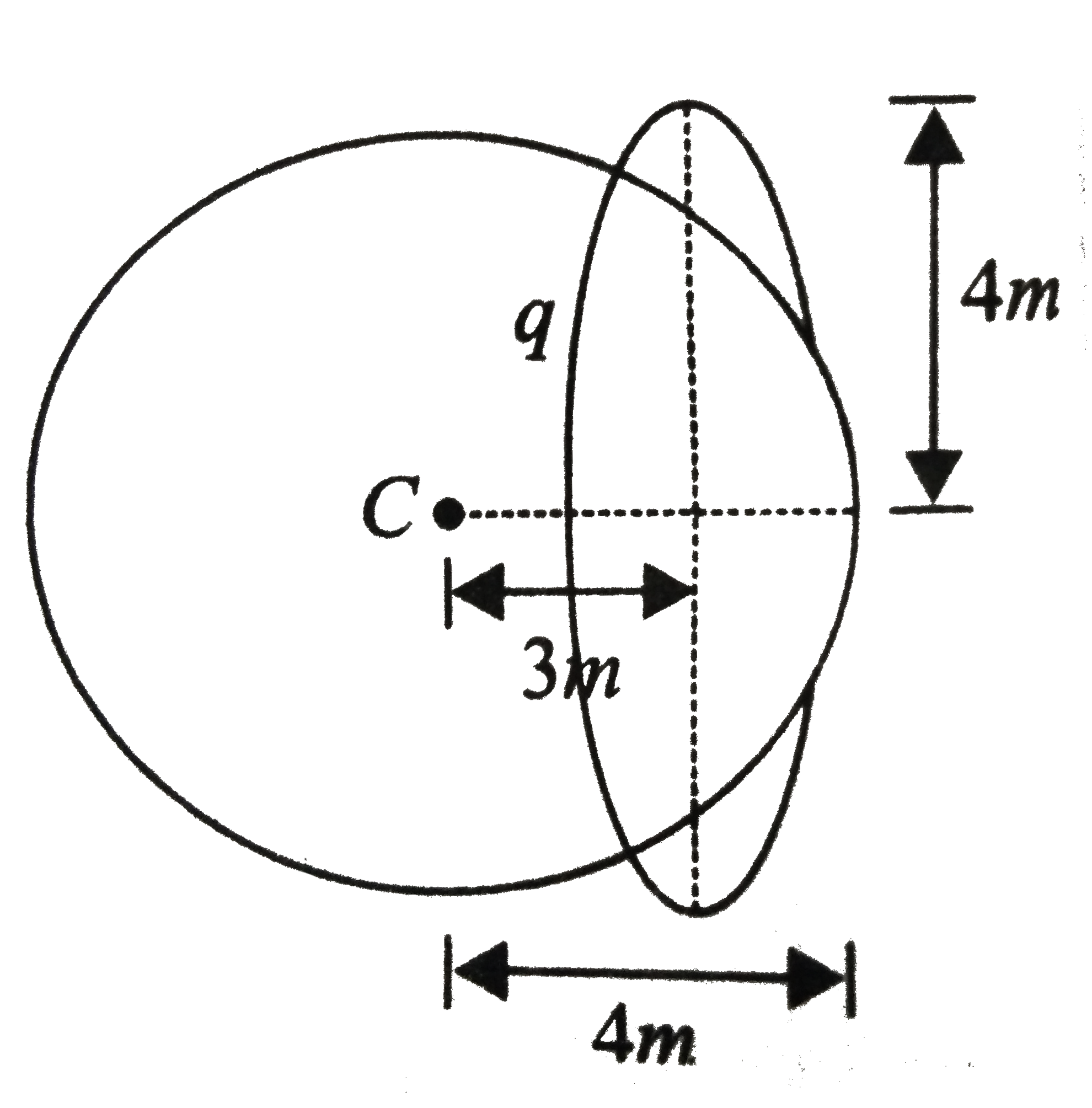A nonuniformly charged ring is kept near an uncharged conducting solid sphere. The distance between their centers (which are on the same line normal to the plane of the ring) is 3m and their radius is 4m. If total charge on the ring is 1μC, then the potential of the sphere will be
2.25kV
3kV
1.8kV
cannot be determined
The correct Answer is:C
q=1μC is the charge on ring. To find the potential of sphere, wefind potential at the center of sphere, which will be same as the potential at any point on the surface of sphere. It is because, electric field inside the sphere will be zero and sphere will be an equipotential body. Due to charge q on the ring, charges will be induced on the sphere but net charge of sphere will remain zero. Hence potential at the center of sphere due to induced charges on sphere due to induced charges on sphere will be zero. Potential at the center of sphere will be only due to charge of ring.
So VC=kq√32+42=9×109×10−65
=1.8×103V=1.8kV

Topper's Solved these Questions
- BOOK - CENGAGE PHYSICSCHAPTER - MISCELLANEOUS VOLUME 3EXERCISE - Multiple Correct Answer type109videos
MISCELLANEOUS VOLUME 3
- BOOK - CENGAGE PHYSICSCHAPTER - MISCELLANEOUS VOLUME 3EXERCISE - Assertion and Reason Type8videos
MISCELLANEOUS VOLUME 3
- BOOK - CENGAGE PHYSICSCHAPTER - MECHANICAL PROPERTIES OF SOLIDSEXERCISE - Question Bank4videos
MECHANICAL PROPERTIES OF SOLIDS
- BOOK - CENGAGE PHYSICSCHAPTER - MISCELLANEOUS VOLUME 5EXERCISE - Integer12videos
MISCELLANEOUS VOLUME 5
Similar Questions
Potential on the axis of ring of radius 3R and at distance 4R from centre of ring is (charge on the ring is Q )
View SolutionA thin wire ring of radius R carries a charge q. The ring si oriented parallel to an infinite conducting plane and is spearated by a distance l from it. Find :
(a) the surface chagre density at that point fo the plane symmetrical with respect to the ring,
(b) the strength and the potential of the electric field at the centre of the ring.View Solution
Knowledge Check
- Question 1 - Select One
A non-uniformly charged ring is kept near an uncharged conducting solid sphere. The distance between their centres (which are on the same line normal to the plane of the ring) is 1 and their radius is R. If total charge on the ring is Q then the electric potential of the sphere will be:
AKQRBKQlCKQ√R2+l2Dcannot determined - Question 2 - Select One
A solid conducting sphere, having a charge Q, is surrounded by an uncharged conducting hollow spherical shell. Let the potential difference between the surface of the solid sphere and that of the outer surface of the hollow shell be V. If the shell is now given a charge of -4 Q, the new potential difference between the same two surfaces
A4 VB2 VC−2VDV - Question 3 - Select One
A solid conducting sphere having a charge Q is surrounded by an uncharged concentric conducting hollow spherical shell. Let the potential difference between the surface of the solid sphere and that of the outer surface of the hollow shell be V. If the shell is now given a charge of −3Q, the new potential difference between the same two surfaces is :
A(a) VB(b) 2VC(c) 4VD(d) −2V
Both the ring and the conducting sphere are given the same charge Q. Determine the potential of the sphere. Assume that the centre of the sphere lies on the axis of the ring. Is it necessary that the charge on the ring be uniformly distributed to answer the above question ?
 View Solution
View SolutionA solid conducting sphere holds more charge than a hollow sphere of the same radius when they are at same potential.
View SolutionCharge of 12μC is given toa hollow metallic sphere of radius 0.1 m. find the potential at (i) the surface of the sphere (ii) the centre of the sphere.
View SolutionA solid conducting sphere having a charge Q is surrounded by an uncharged concentric conducting hollow spherical shell. Let the potential difference between the surface of the solid sphere and that of the outer surface of the hollow shell be V. If the shell is now given a charge of −3Q, the new potential difference between the same two surfaces is :
View SolutionA hollow insulated conducting sphere of radius 2m, is given a charge of 5 μC. What will be the electric field at the centre of the sphere?
View Solution
